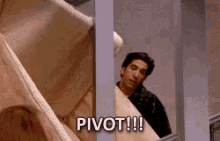I’ve been watching my legal research students use AI and noticing a common pattern.
They typically go into an AI “Ask” feature in Lexis or Westlaw, get an answer, and then continue the conversation by asking more questions. This is exactly what the tools are designed to encourage.
The problem is that this process often leaves them with only a handful of sources, and not always the most relevant or authoritative ones. They miss critical nuance, and—most dangerously—they can’t see what the AI has limited or hidden from them.
I’ve started calling this the “AI Tunnel.” And I’ve realized that as expert researchers, it’s our job to teach them how to escape it.

The “AI Tunnel” vs. The “Toe-Hold” Strategy
When I use generative AI in my own research, I’m doing something completely different from my students. I’m using it for a “toe-hold.”
- I ask AI to “explain the elements of X” to get the key concepts, and I immediately pivot to a treatise to get further detail on those concepts.
- I ask AI to “find the statute for Y” to get the statute number, and I immediately pivot to the Notes of Decisions.
- I ask AI to “find a few starting cases for Z” to get one good case, and I immediately pivot to the citator and its headnotes, or use the vocabulary to craft a search.
In other words, I use AI as a 1-minute scaffold to get me to traditional research tools. My students are using it to have a 30-minute conversation that delays them from finding the best sources (or maybe they never find them at all).
They are missing the pivot.
Our “Expert Blind Spot” is Their Biggest Hurdle
My first instinct was to just tell them my strategy. “Don’t stay in the AI! Pivot!”

But as we all know, that doesn’t work. This is a classic “Expert Blind Spot” problem.
The “Toe-Hold” strategy, for an expert, is one seamless, automatic action. For a novice, it’s a series of high-friction steps that rely on implicit skills we take for granted:
- Diagnostic Skimming: We don’t read the AI’s wall-of-text answer. We scan it. Our students, who are not yet skilled at skimming, try to read it and get overwhelmed by the noise.
- “Pivot Point” Identification: Our expert eyes are trained to instantly spot the “pivot points”: a statute number (
O.R.C. 5321.16), a key case name (Bowen v. Kil-Kare, Inc.), or a term of art (“natural accumulation rule”). To a 1L, this is all just undifferentiated text. - Process Knowledge: We automatically know the “if-then” script: “If I have a case, then I go to the citator.” A 1L doesn’t have that script memorized yet.
So we can’t just tell them the strategy. We have to make these implicit skills explicit.
Making the “Toe-Hold” Teachable: Three Concrete Techniques
I’m now redesigning my talks to 1Ls around this single goal. Here are the three main pedagogical tools I’m using to scaffold this “expert” skill for “novices”:
1. The “Narrated Skim”
This is the most critical piece. I’ll do a “canned” demo, put an AI-generated answer on the screen, and literally narrate my internal monologue out loud.
- “Okay, I’ve got my answer. I am NOT reading this whole thing. My eyes are scanning only for a statute number, a case name, or a key term of art. I’m ignoring the summary… ignoring the intro… Ah! [point with mouse] Right here:
Bowen v. Kil-Kare, Inc.That’s my toe-hold. That’s all I need. I am now leaving this screen.”
This is Cognitive Apprenticeship—making our expert thinking visible.
2. The “Pivot Point” Checklist
To lower cognitive load, I’m giving them a simple checklist that explicitly lists what they are skimming for.
What Am I Skimming For? (An Expert’s Checklist)
- Specific Statute Numbers (e.g.,
O.R.C. 5321.16)- Key Case Names (e.g.,
Bowen v. Kil-Kare, Inc.)- Key Phrases / Terms of Art (e.g., “natural accumulation rule”)
- Key Secondary Sources (e.g., “as mentioned in Prosser and Keeton on Torts“)
3. The “Find the Pivot” Interactive Exercise
My main in-class exercise is no longer a complex problem. It’s a highly scaffolded, 5-minute task focused only on this one skill.
- The Task: I’ll give them an AI-generated answer. In pairs, their goal is not to find the “answer.” Their goal is to find the “toe-hold.”
- The Prompt: “You have 3 minutes. Scan this document and find the one statute, one case, or one key phrase you would use to ‘escape the tunnel.’ Be prepared to tell me where you would pivot to next (e.g., ‘the Notes of Decisions’ or ‘KeyCite’).”
This approach re-centers our value. We’re teaching students how to build a comprehensive research process, and that AI is just one tool in that toolbox.
How are you teaching this “pivot”? What other “expert blind spots” have you run into when teaching AI? I’d love to hear your thoughts in the comments.

I love this!! Thanks for sharing!!
Pingback: Legal Research Trapping You in an “AI Tunnel”? Use a Toe-hold to Get Out | On Firmer Ground